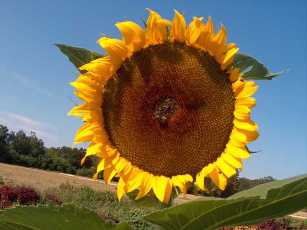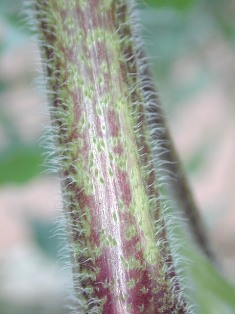Classified Information
Kingdom: Plantae
Phylum:
Tracheophyta
Class: Magnoliopsida
Order: Asterales
Family:
Asteraceae
Genus:
Helianthus
Species:
Helianthus annuus
Domain
Eukaryota: multicellular organism with amembrane bound nucleus and other
specialized organelles within the cytoplasm.
Kingdom
Plantae: photosynthetic, can conduct sexual reproduction with an
alternation of generations between gametophyte and sporophyte.
Phylum Tracheophyta: water conducting cells, called tracheids, to conduct water throughout the plant and that show spiral bands in walls.
Class Magnoliopsida: a dicotelydon: vascular bundles in ring formation, veins
on leaves branch, flowers come in multiples of 4 or 5.
Order Asterales: leaves alternate, the anthers are united into a tube, flowers
are collected into heads surrounded by bracts, is filament free, no
stipules.
Family Asteraceae
(Compositae*): leaves alternate and have no stipules, flowers in compact
heads with 5 stamens, the heads often appear as the flowers when
actually some have ray flowers and small tube flowers in central disk,
under each flower head is a small grouping of leaflets, known as bracts.
Genus
Helianthus: ray flowers are pointed, brown or yellow centers, falling
when seed matures, the lower leaves are opposite, stems are erect, heads
usually radiate.
Species
Helianthus annuus: leaves and stems are green, stems usually erect,
usually taproots, disk usually over two inches broad, leaves mostly
alternate, head radiates, several heads in a branched cluster.


